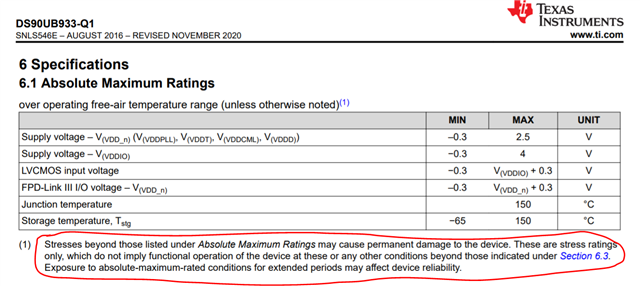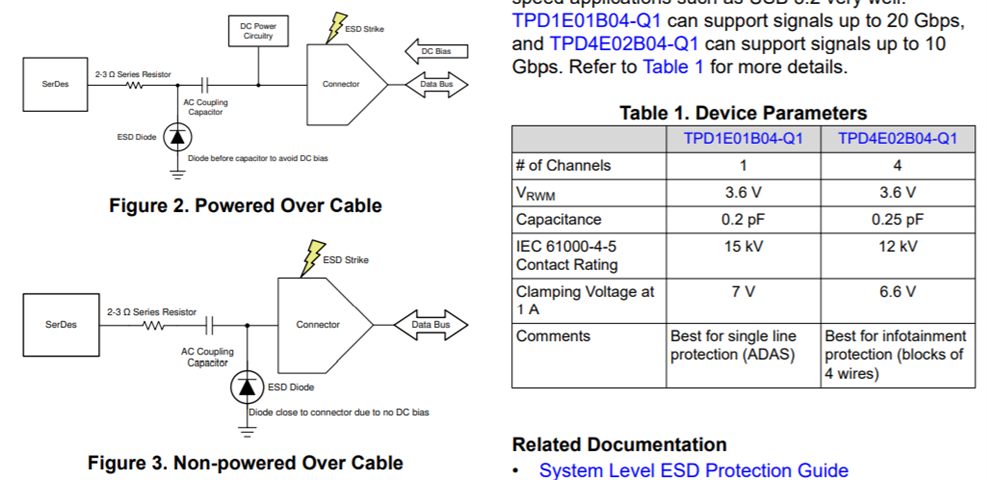Dear team,
My customer choose ESD for our 933, and we have some questions as below,
1. They choose SESD0402X1UN, and input capacitance is 0.3pF, breakdown voltage is 8.8V;
2. What is DOUT pin ratings, V(VDD_n)+0.3? If so, the maximum rating of DOUT is 2.1V, then ESD's breakdown voltage should be smaller than 2.1V, right?
3. Is it good to put ESD between DOUT pin and AC capacitor? What is our recommendation?

Thanks & Best Regards,
Sherry





